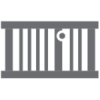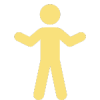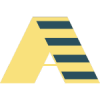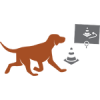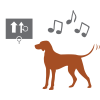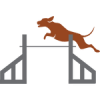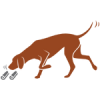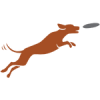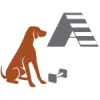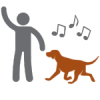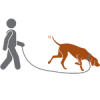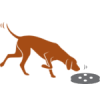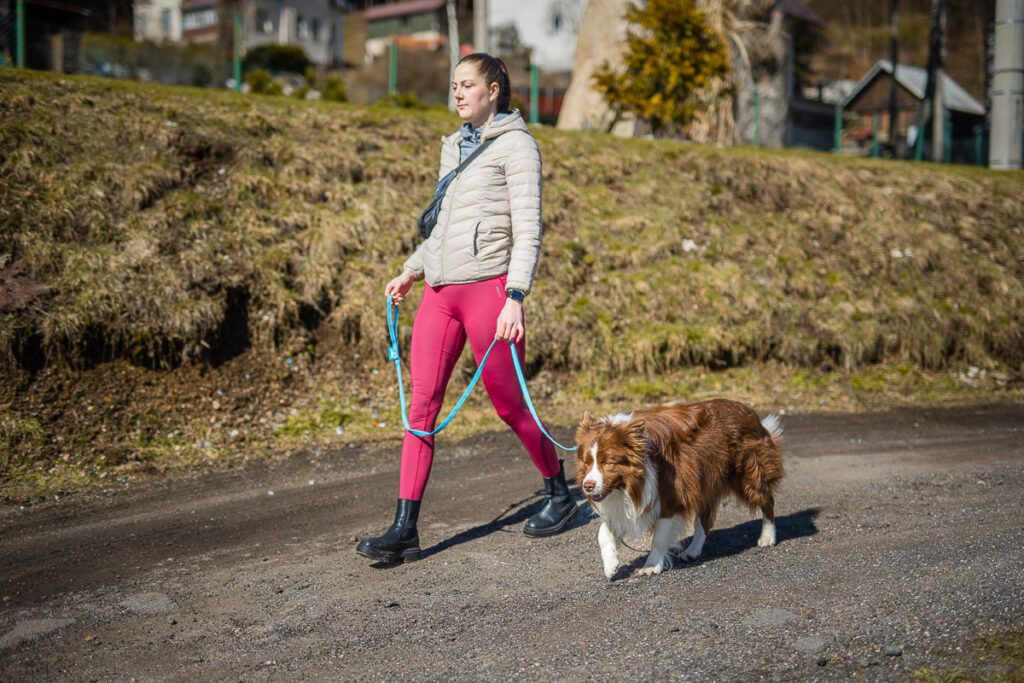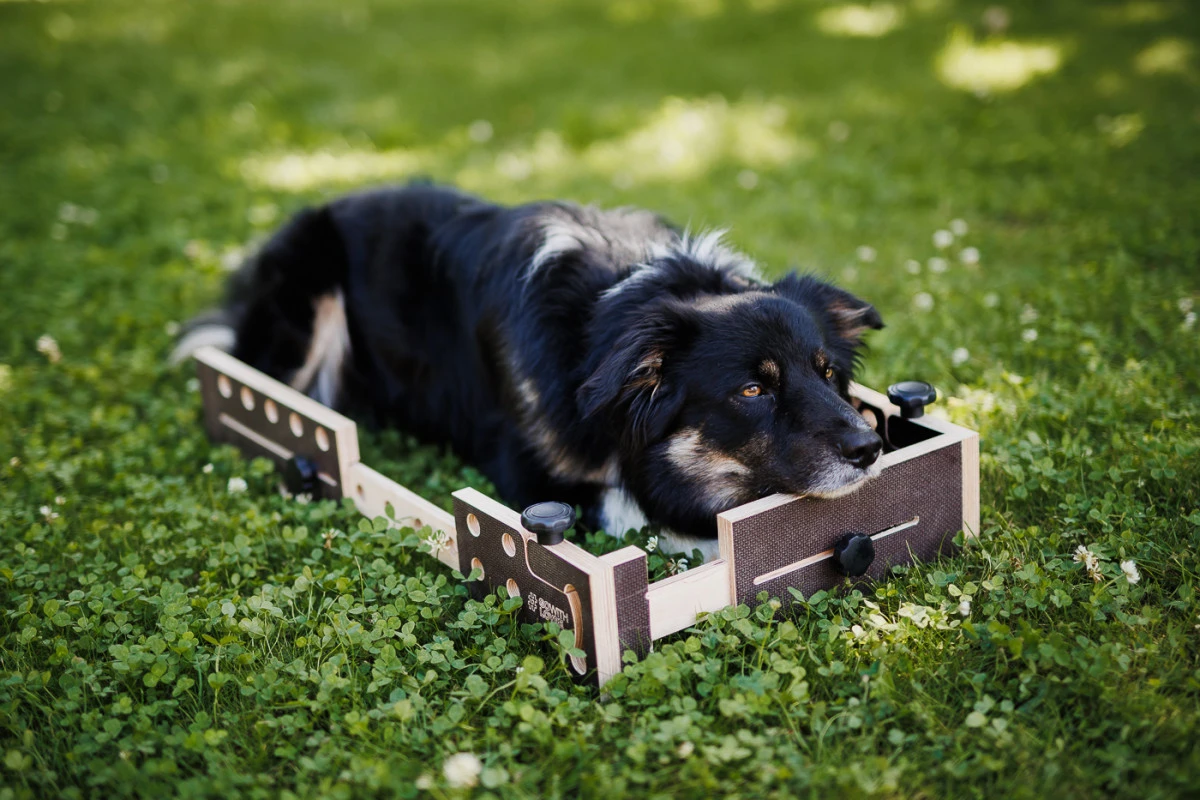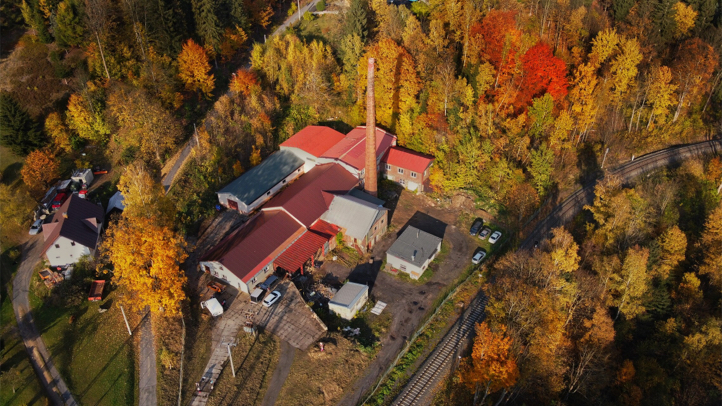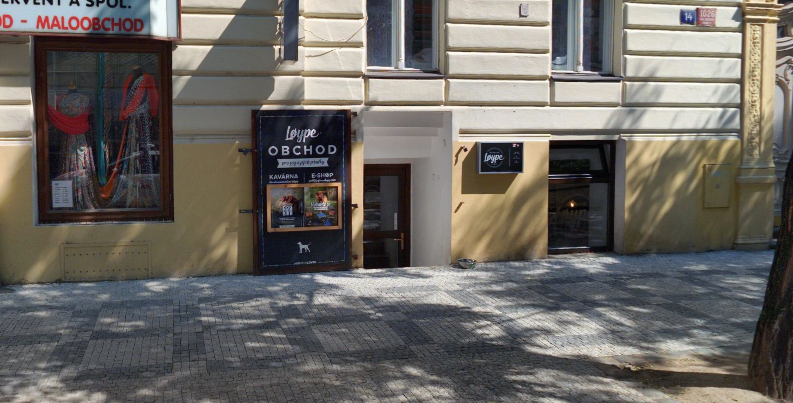How to train your dog to enter the training square in Obedience
The square is one of approximately 10 exercises in the canine discipline of obedience that thoroughly tests a dog's control. Training the square is a dynamic exercise that ends with calm focus. This work on your dog's concentration is also great for everyday life.
How to start?
- Set up the square and place cones or markers at the corners to keep it in place. Prepare a small bowl and some treats. Take your dog to the area where the square is set up and walk around it with them. Familiarizing them with the area is important to prevent unnecessary anxiety and make the training process smoother.
- At the beginning, it helps to have an assistant, another person, who can place a bowl with treats inside the square (we recommend putting several treats in the bowl so that your dog spends some time eating them). This way, the dog's attention won't be distracted by you leaving or giving other commands.
- Take your dog and move 2 to 3 meters away from the square. Ask your assistant to place the treat bowl in the back part of the square, away from you, with a clear gesture. Hold your dog by the collar so that they can see what the assistant is doing in the square.

- As soon as the assistant leaves the space, your dog is focused on the square and the bowl, release them without any hand signals or verbal commands. Since the dog sees where the bowl is, they'll run into the square to get the treat. As soon as the dog crosses the boundary of the square, give the command. The word you choose is up to you. We use "BOX."
- Once the dog reaches the bowl and enjoys the treat, your main task is to quickly run to them and the bowl, replenish the treats, and praise them. You can increase the reward by playing a quick game of tug with a toy.
- Lead the dog away by the collar and repeat the process. Some dogs don't like being grabbed by the collar, so for them, use a harness with a handle.
TIP: During training, alternate the sides of the square. This helps the dog get used to approaching from any direction and regardless of the color of the boundary. Also, it's good to use cones of different colors, although this is less crucial than varying the colors of the square's sides.
Continuing without an assistant
- Take the dog by the collar or harness and lead them into the square. Place the bowl with treats there and then walk together to the spot from where you'll send them into the square. At first, this may be a very short distance, and that's perfectly fine.
- Then proceed as before: reward, praise, and play (in the square!).
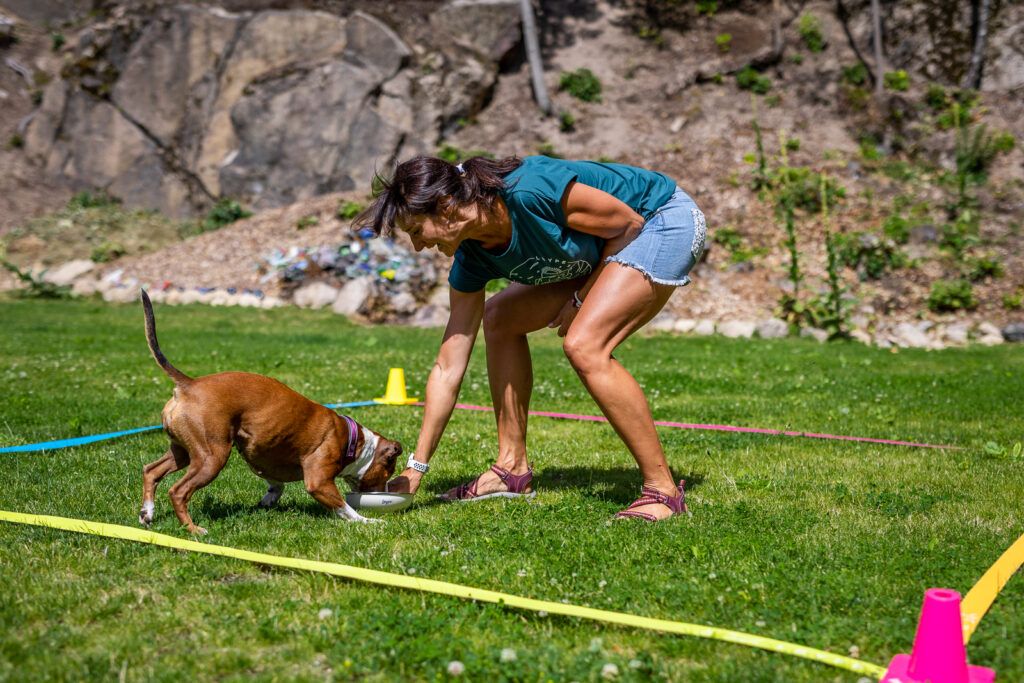
How to work from a distance?
- Start at a short distance, 2 to 3 meters from the edge of the square. Gradually increase the distance. However, don't rush to extend the distance. It's important that your dog runs into the square with enthusiasm and enjoys being there.
- Speed is also important – the pace at which the dog runs into the square. Work on motivation and joy during training. The dog should run into the square quickly and eagerly.
- Gradually, you'll reach a distance of 10 to 15 meters, which is required by the examination rules. It's also beneficial to vary the distances occasionally, even trying up to 20 meters: being well-prepared means no surprises.
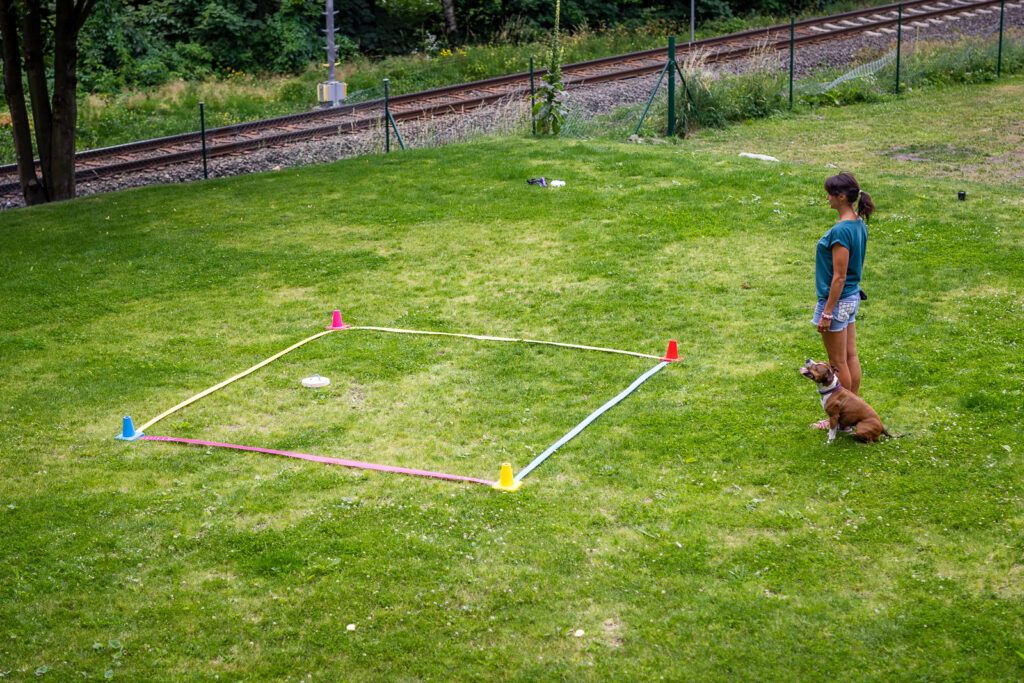
Removing the bowl
- Once your dog reliably runs into the square for the bowl, you can move on to the next phase. Sit the dog down and leave them in place. Walk to the back of the square, where you normally place the bowl, but this time, don't actually put it there. Pretend to place something there, but leave nothing. Don't look at the dog during this process, as this will spark their natural curiosity.
- Return to your dog and give the verbal command (we use "BOX") to send them into the square. Every dog will run to check out what you did in the square. Once they reach it, give them a verbal praise (or use a clicker if you work with one) and throw a reward to the dog—something that flies well and the dog can easily see (like a piece of sausage, cheese, or a larger dried meat treat). Quickly run to them and reward them again, even more generously.
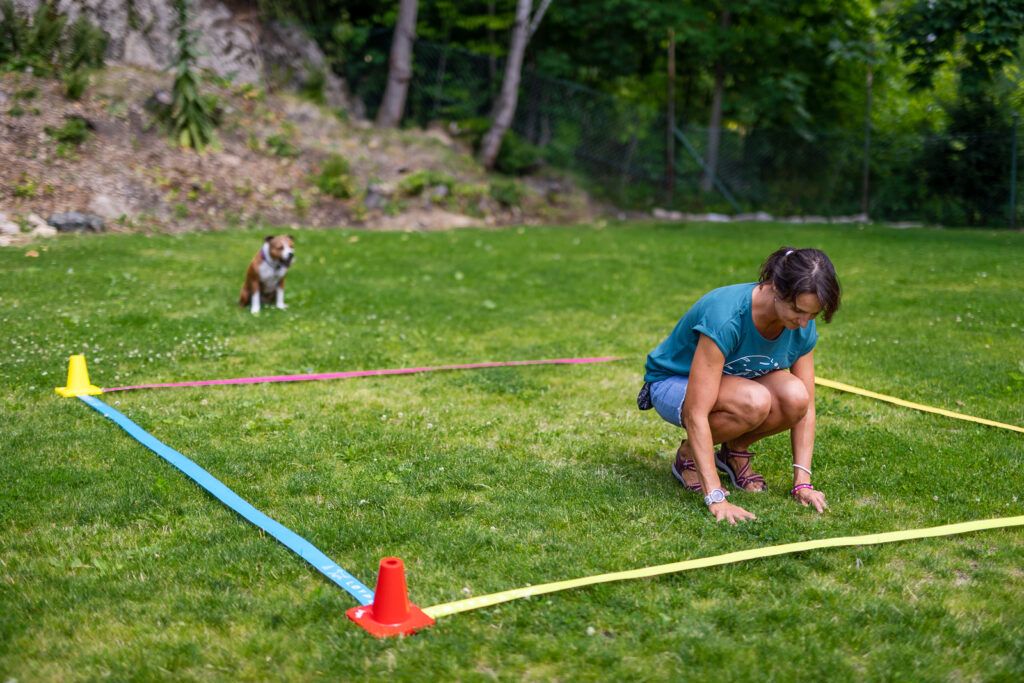 TIP: Alternate between feeding from the bowl in the square and throwing the treat so that more successful attempts involve feeding from the bowl in the square.
TIP: Alternate between feeding from the bowl in the square and throwing the treat so that more successful attempts involve feeding from the bowl in the square.
Lying down in the square
- Once the dog reliably runs into the square, the next phase is to have them lie down on command. But this needs to be practiced separately and in stages.
- Start with the command while the dog is close to you, and once they understand and obey, you can start giving the command in different places, situations, and at different distances. The dog should always follow the command. If not, you need to take a step back and make the conditions easier for them again.
- Once you're confident in the dog's ability to lie down from a distance, it's time to combine everything! Stand with your dog in front of the square, give the verbal command to send them into the square ("BOX"), and once the dog enters the square, shout the command to lie down ("LIE DOWN").
- The exam rules allow another option where the dog stops before lying down and only lies down after a few seconds. The key here is that the dog must stand still for 3 seconds (so after they enter the square, you give the command like "STAY" to keep them standing still), and then on your command ("LIE DOWN"), they lie down.
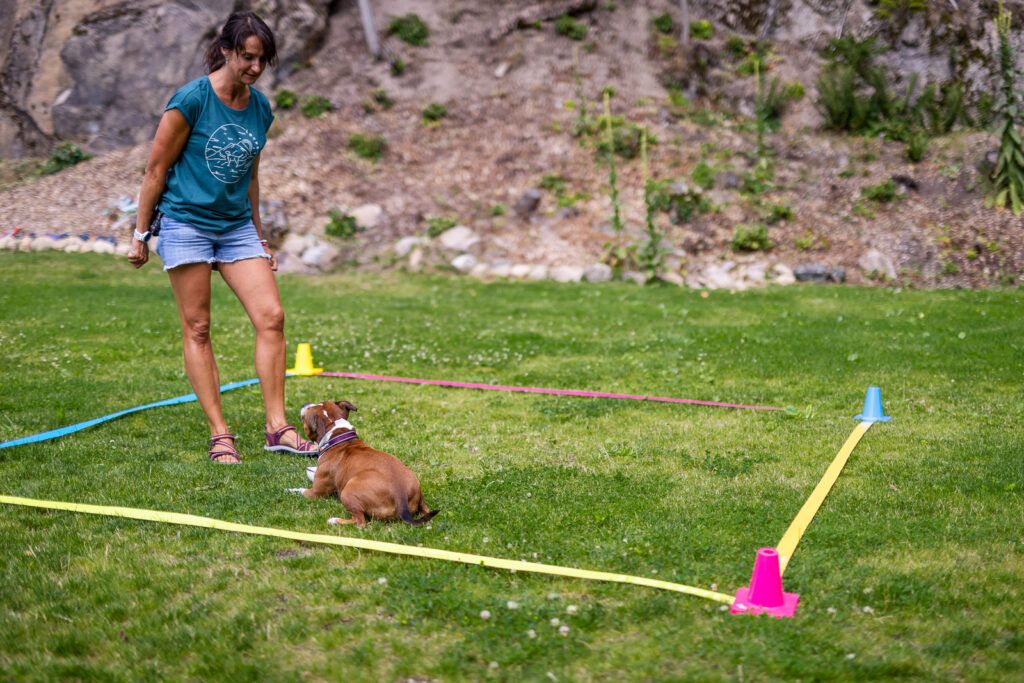
TIP: If your dog isn't food-motivated and doesn't respond to food as a reward, you can try the alternative: using a target. However, the dog must understand target training and be comfortable running to a target from a distance. With a target, you work the same way as with a bowl of treats, with the only difference being that the reward always comes directly from you.
Løype's Final Tips:
- Always place the bowl in the same spot.
- Initially, make sure the bowl is very visible to the dog. After about fifty attempts, when the dog understands that they should run to it, you can switch to a lower bowl or slightly bury it in the ground so the dog only sees it at the last moment.
- Why a bowl and not a toy? Playing keeps the dog occupied until you reach them and replenish the reward, but with a toy, they might run off and not quickly grasp the exercise's purpose.








